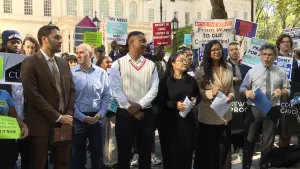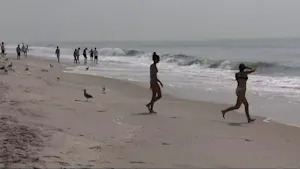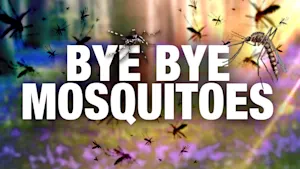More Stories
U.S. health officials on Monday cut isolation restrictions for Americans who catch the coronavirus from 10 to five days, and similarly shortened the time that close contacts need to quarantine.
Centers for Disease Control and Prevention officials said the guidance is in keeping with growing evidence that people with the coronavirus are most infectious in the two days before and three days after symptoms develop.
The decision also was driven by a recent surge in COVID-19 cases, propelled by the omicron variant.
MORE: Stop the Spread | Live Blog
Early research suggests omicron may cause milder illnesses than earlier versions of the coronavirus. But the sheer number of people becoming infected - and therefore having to isolate or quarantine - threatens to crush the ability of hospitals, airlines and other businesses to stay open, experts say.
CDC Director Rochelle Walensky said the country is about to see a lot of omicron cases.
"Not all of those cases are going to be severe. In fact many are going to be asymptomatic,” she told The Associated Press on Monday. “We want to make sure there is a mechanism by which we can safely continue to keep society functioning while following the science."
Last week, the agency loosened rules that previously called on health care workers to stay out of work for 10 days if they test positive. The new recommendations said workers could go back to work after seven days if they test negative and don’t have symptoms. And the agency said isolation time could be cut to five days, or even fewer, if there are severe staffing shortages.
Now, the CDC is changing the isolation and quarantine guidance for the general public to be even less stringent.
Stop the Spread: Where can I get tested for COVID-19?
The guidance is not a mandate; it's a recommendation to employers and state and local officials. Last week, New York state said it would expand on the CDC's guidance for health-care workers to include employees who have other critical jobs that are facing a severe staffing shortage.
It's possible other states will seek to shorten their isolation and quarantine policies, and CDC is trying to get out ahead of the shift. “It would be helpful to have uniform CDC guidance” that others could draw from, rather than a mishmash of policies, Walensky said.
Below is more information on the new guidance:
WHAT ARE THE RULES FOR ISOLATION?
The isolation rules are for people who are infected. They are the same for people who are unvaccinated, partly vaccinated, fully vaccinated or boosted.
They say:
- The clock starts the day you test positive.
- An infected person should go into isolations for five days, instead of the previously recommended 10.
- At the end of five days, if you have no symptoms, you can return to normal activities but must wear a mask everywhere - even at home around others - for at least five more days.
- If you still have symptoms after isolating for five days, stay home until you feel better and then start your five days of wearing a mask at all times.
WHAT ARE THE RULES FOR QUARANTINE?
The quarantine rules are for people who were in close contact with an infected person but not infected themselves.
- For quarantine, the clock starts the day someone is alerted to they may have been exposed to the virus.
Previously, the CDC said people who were not fully vaccinated and who came in close contact with an infected person should stay home for at least 10 days.
Now the agency is saying only people who got booster shots can skip quarantine if they wear masks in all settings for at least 10 days.
That’s a change. Previously, people who were fully vaccinated - which the CDC has defined as having two doses of the Pfizer or Moderna vaccines, or one dose of the Johnson & Johnson vaccine - could be exempt from quarantine.
Now, people who got their initial shots but not boosters are in the same situation as those who are partly vaccinated or are not vaccinated at all: They can stop quarantine after five days if they wear masks in all settings for five days afterward.
WHAT'S THE RISK OF FIVE DAYS?
Suspending both isolation and quarantine after five days is not without risk.
A lot of people get tested when they first feel symptoms, but many Americans get tested for others reasons, like to see if they can visit family or for work. That means a positive test result may not reveal exactly when a person was infected or give a clear picture of when they are most contagious, experts say.
When people get infected, the risk of spread drops substantially after five days, but it does not disappear for everyone, said Dr. Aaron Glatt, a New York physician who is a spokesman for the Infectious Diseases Society of America.
“If you decrease it to five days, you're still going to small but significant number of people who are contagious,” he said.
That's why wearing masks is a critical part of the CDC guidance, Walensky said.
More from News 12
2:34

Guide: Safety tips to help prevent home burglaries
2:19

Guide: Safety measures to help prevent fires and how to escape one
2:40

Mayor's budget cuts: A controversial solution amidst immigration crisis
2:07

Tips on how to avoid confrontation with sharks while swimming in the ocean
2:33

5 tips to prevent mosquito bites and getting sick from viruses
2:39
